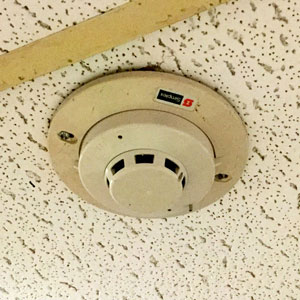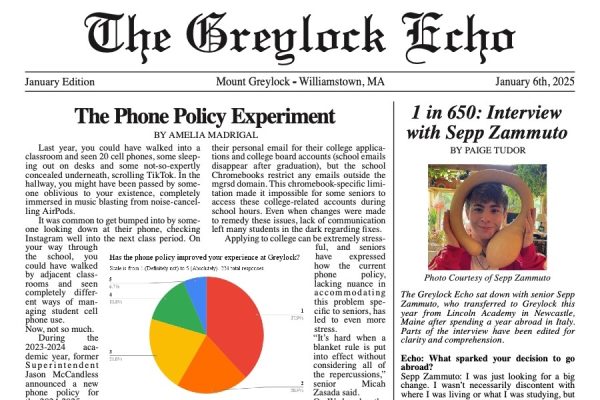Fire Alarm Malfunctions

On Monday the 21st of September, at 7:35 in the morning, a fire alarm sounded throughout the Mt. Greylock school building because of a malfunction in the emergency system. Students filed out of the doors in a quick and orderly manner, confused by the unexpected timing of the “fire drill.” Since most students had not reached their first period class yet, they huddled in groups at the end of the parking lot, unsure about which teacher to follow. Principal Mary MacDonald instructed them to find their first period teacher because it was not a drill. Firemen arrived quickly and left without finding any fire. Both students and faculty felt uncertain about what caused the alarm.
The cause of the alarm turned out to be a minor malfunction. As a safety measure, smoke detectors activate when they begin to malfunction as a way of signaling the need for maintenance. This protective measure ensures that the system never fails during a real emergency. The fire alarm system indicated where the alarm was activated, so firefighters found the problem with ease. Facilities Supervisor Jesse Wirtes and volunteer firefighter and teacher Peter Niemeyer arrived at the scene first. They noticed a solid red light on the detector, meaning that the alarm was either triggered or malfunctioned. They took down the detector and failed to restart it, verifying a broken piece inside.
Most of the students had already arrived at school, with some students still coming. Students, with help from teachers, went through the correct exits based on their locations in the building. At the time, two of the Crisis Management members, Jacob Schutz and Rob Wnuk, were absent during the situation. Physical Education teachers Brian Gill and Brandon Asplundh, stepped up to fill their roles by directing kids and helping keep the fluidity of the students getting off arriving buses. MacDonald said she was pleased with the success of the evacuation.
The faculty had a problem accounting for students. Teachers could not check attendance because of the awkward time of the event. Mrs. MacDonald considers this a lesson learned. She thinks a new system should be implemented to help direct and communicate with students. Mrs.MacDonald speculated that the parking lot should be separated into alphabetical sections to which students should go based on their current teacher’s last name.
Mrs. MacDonald quickly sent an email to teachers explaining the cause of the alarm; however, there was no announcement to inform the students about the situation. She assumed that because students quickly went back inside and believed that the teachers would share the news with their students, and she did not see a need for a disruptive announcement to an already disrupted day. But, “it may be lesson number two,” Mrs. MacDonald later commented, and she would “consider it in the future.” A minor malfunction developed into important lessons about the safety of the school.






